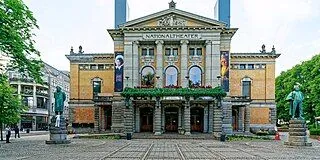Oslo
Oslo is the capital and most populous city of Norway. It constitutes both a county and a municipality. The municipality of Oslo had a population of 709,037 in 2022, while the city's greater urban area had a population of 1,064,235 in 2022, and the metropolitan area had an estimated population of 1,546,706 in 2021.

Some of the key events about Oslo
- 1048The city of Oslo was founded
- 1349The Black Death devastated Oslo, killing a large portion of its population
- 1624Oslo was rebuilt and renamed Christiania after a devastating fire
- 1624A fire destroyed most of the city, leading to its relocation and rebuilding
- 1716Another major fire burned down a significant part of the city
- 1814Christiania (Oslo) became the capital of Norway
- 1814Oslo lost its status as capital when Norway entered a union with Sweden
- 1850The University of Oslo was established
- 1892The Holmenkollen ski jump was constructed, becoming a symbol of Oslo
- 1899The National Theatre opened, enhancing Oslo's cultural scene
- 1925The city's name was officially changed back to Oslo
- 1940Nazi Germany invaded and occupied Oslo during World War II
- 1943The University of Oslo was closed by Nazi occupiers, disrupting education
- 1950A tram and train collision in Oslo resulted in multiple fatalities
- 1952Oslo hosted the Winter Olympics
- 1993The Oslo Accords, despite initial promise, ultimately failed to bring lasting peace to the Middle East
- 1998Oslo Airport Gardermoen opened, significantly improving international connections
- 2008The Oslo Opera House was inaugurated, becoming an architectural landmark
- 2011A car bomb exploded in Oslo's government quarter, causing significant damage and casualties
- 2020Oslo, like many cities worldwide, was severely impacted by the COVID-19 pandemic, leading to lockdowns and economic hardship
Disclaimer: This material is written based on information taken from open sources, including Wikipedia, news media, podcasts, and other public sources.





























